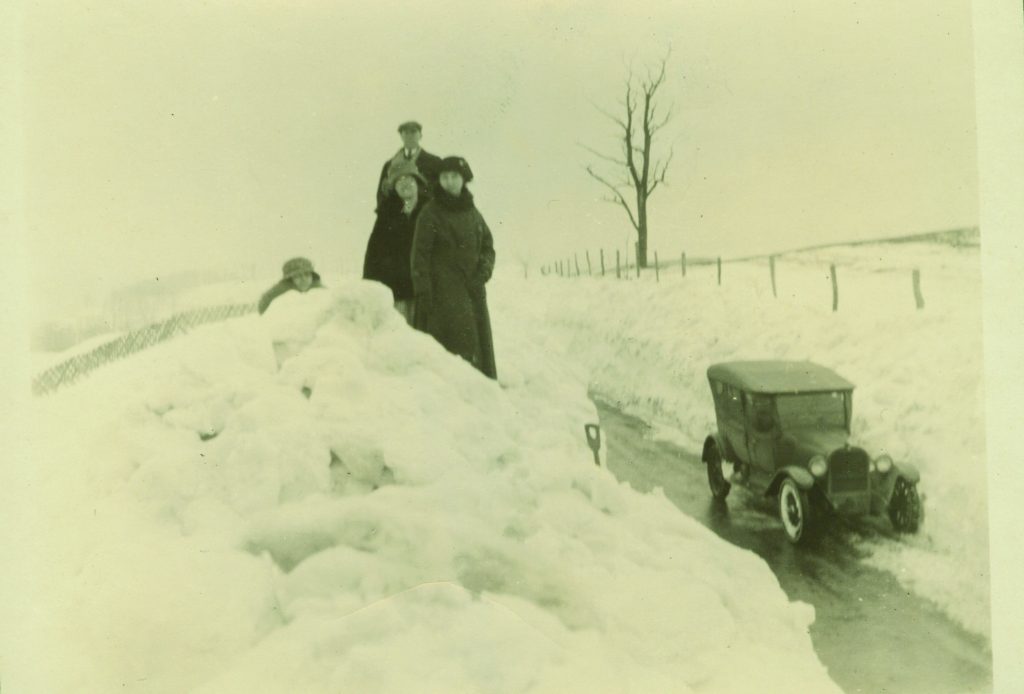Garrett County weather is somewhat legendary. Located in the Allegheny Mountain range of the Appalachians, Garrett County’s microclimate strongly contrasts with Maryland’s otherwise temperate conditions. Dead on the path of Lake Erie’s snow belt, the area is known for its cold winters and steady snow dumps. As much as 200-plus inches has been recorded on Marsh Mountain. In terms of snow days per year, Garrett County can be one of the snowiest areas east of the Rockies and has been know to surpass much of New England in overall snowfall. Throughout the area’s history, the harsh winter weather has played a major role in the lives of my ancestors and myself.

Garrett County Weather in the 1700s
In 1736, the first white men to ever visit present-day Garrett County arrived via the Potomac in early December. The party of seventeen surveyors and assistants was sent by the king of England to determine the boundaries for the northwestern corner of the great Northern Neck land tract. They encountered every kind of weather – bitter cold, rain, sleet and, of course, snow. The winter weather proved harsher than they expected. As their supplies dwindled, they faced certain starvation. In their desperation, members of the party decided it necessary to kill and eat one of their own surveyors. John Savage was the unlucky candidate – deemed “the most worthless member of their party” due to his failing eyesight. Fortunately, supplies arrived in the nick of time and saved his life. The river near their campsite was named Savage in his honor. It was the first geographic feature of the area to receive a white man’s name.
Garrett County Weather in the 1800s
Early settlers of the remote and wild western part of Maryland found themselves increasingly isolated during the winter months. Deep snow drifts were a common problem in the Allegheny highlands. In 1852, more than nine feet of snow accumulated in the month of February, and three years later there were reports of snow falling in the month of June. At the time, sleighs were a mark of prestige; only the wealthier families could afford them. Some were beautifully upholstered in velvet. Sleigh bells were a “must” for the horses. Families who had no sleigh or sled usually walked or rode horses when it was expedient for them to travel. When roads were drifted shut with snow, the family remained at home, missing school and church services. If trips to the store were necessary, the father or older sons made the trip by horseback or on foot. Life was much slower and simpler then.
20th Century Garrett County Weather
The winter of 1936 was especially memorable for workers from the County Roads Department. A sixteen foot snowdrift completely blocked an area of road half way between Sand Flat and Deer Park. The giant drift stymied road crews for three days. Machines were useless against it, and the road had to be opened by hand. A combination of two opposite factors made this particular drift so difficult to remove. First, there was a 10 inch snowfall that was light and dry. Then the wind started to blow the snow from the adjoining fields, dumping it in the roadway. The wind signaled a brief change in temperature that resulted in a few hours of rain. As quick as the temperature rose, it fell again, freezing the formerly dry light snow mass. No matter how crews maneuvered their trucks, the drift was impenetrable. After many failed mechanical attempts, it was decided that the only way to open the road was by hand. It took seven hours to cut a path through the drift that allowed a rotary plow to move through and clear it entirely.
In Conclusion
Garrett County’s some times harsh winter weather is part of what makes this area unique. Since the first settlers set foot in Western Maryland, it has not only defined the landscape but has shaped the character of the people that call this place home. Click here to see find out more about local snowfall totals.





